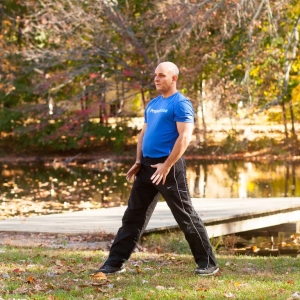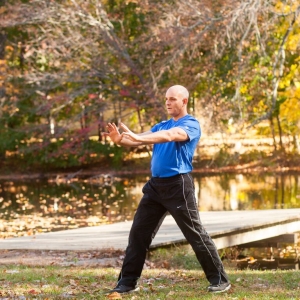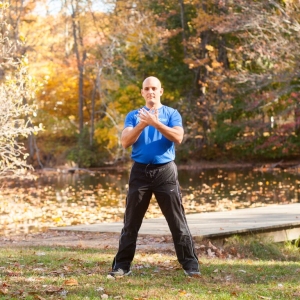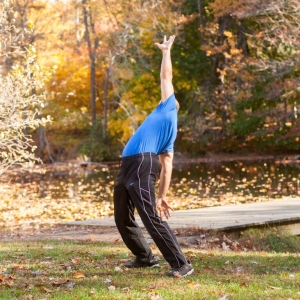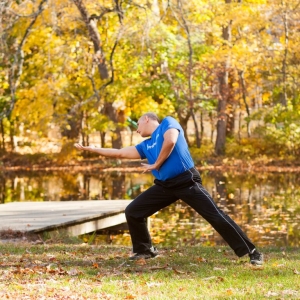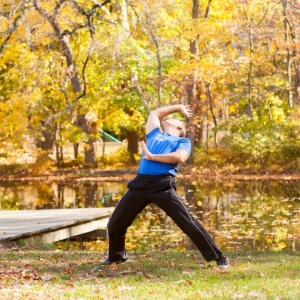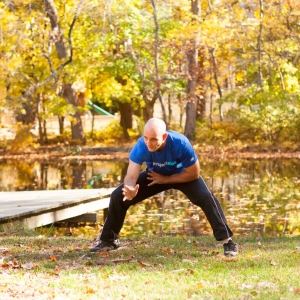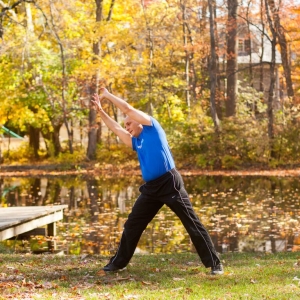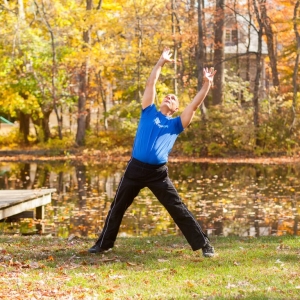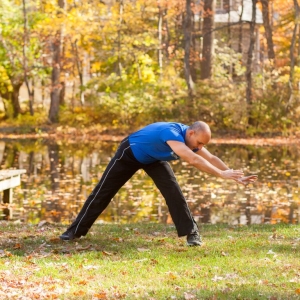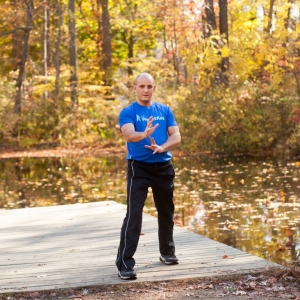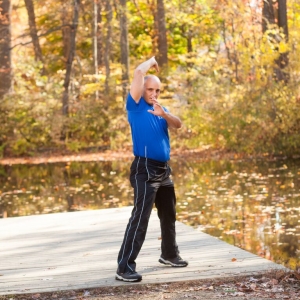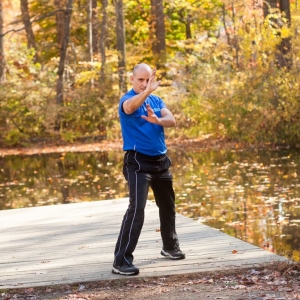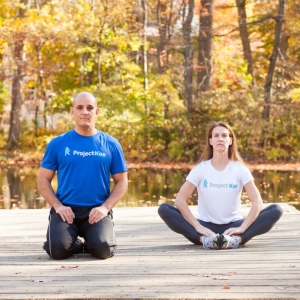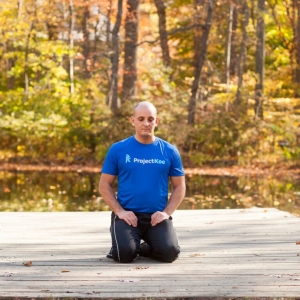Intro for Breathing Exercises
Based on Aikido exercises, these breathing movements will help clear your mind and renew your spirit. You don’t need to join a dojo to take advantage of some of the classical teachings of Japanese martial arts. Once learned, they can be performed anywhere and anytime. Try this series of mind-body movements designed to help you bring awareness to your breathing, infuse yourself with energy and return to your work strong, calm and renewed.
Aiki Age (“eye-key-ah-geh”): With the arms rested downward, flair the hands wide open and roll the wrists forward while simultaneously raising both arms to chest height. The arms are slightly bent. As you lift upward, inhale through the nose. Lower the arms downward while breathing out, gently, through the lips. Don’t force the air out, simply let the air escape with the same energy with which it was drawn. Repeat 10 times.
TenChi (“ten-chee”): Heaven and earth movement. Standing straight, hold both hands chest high, palms facing you, hands flaired. Raise the left arm and hand up, rotating the palm outward as far as possible. Drop the right arm and hand downward in the opposite direction, again, rotating the palm so the wrist is fully turned. Breathe out entirely as you move the arms and flair the hands. Breathe in as you return to your starting position and reverse the movements, so the right arm is raised and the left arm is lowered. Repeat 10 times.
Koshi Mawasu (“Ko-she-ma-wa-sue”): Hip rotations. While standing straight with knees slightly bent, flair both hands. The heel of the left hand should be at the waist, with fingers pointing forward. Extend the right arm fully forward, with palm facing up. Breathe in, and slowly move the arm in a semi-circular motion around the right side of the body then as far back around the back as the shoulder will allow, keeping the arm fully extended the entire time. Look backward and upward toward the right hand as much as possible. Next, breathe out slowly while bringing the right arm down in a slow chopping motion in front of you and return to the starting position. Repeat the same movements on the left side. Repeat both arms 10 times.
Nenten: Windmills. Stand up and bend forward at the waist 90 degrees, letting the arms hang down naturally and loosely. Swing from the ground to the left side of the body and up, reach up to the sky as high as possible with both hands, then continue around in a full circle back down toward the ground. Let the hands brush the ground lightly, then change direction and brush up and around to the right side and back down to the ground. Complete the circle 10 times on each side.
Shomen Uchi: (“Show-men-oo-chee”): Open-hand downward strike. Stand with the right foot forward and extend the right arm while flaring the hand. The left hand sits just above the waist, flared with fingers pointing forward. Roll both wrists up, and raise both hands into a striking position, with left hand at chest height and right hand above the head. Step forward with the right foot and bring both arms down powerfully, stopping with the right hand at approximately nose height. Maintain a modest bend in the end throughout. Repeat for 10 on each side.
Static Breathing Exercises: Help clear and calm your mind to get through your day. With regular practice, these static breathing exercises can help develop a higher degree of clarity and focus, and allow for multi-tasking without feeling overwhelmed.
8 Count Breathing: Sit or stand quietly and comfortably. Draw a breath in through the nose while counting to 8. Do not raise your shoulders up while you breathe. Hold the breath for a count of 8. Exhale quietly and softly through the mouth for a count of 8. Repeat 5 times.
20 Breaths: Sit comfortably, eyes looking toward the ground without dropping your head. Breathe calmly in and count each breath as “one” and each breath out as “two.” Focus only on the “one” and “two” until you have completed 20. The objective of this exercise is to get to 20 without allowing a single outside thought or distraction to enter the mind. If you are interrupted or lose focus, start again from the beginning. This is an incredibly difficult task for many people, but see how far you can get and then challenge yourself to improve.
Image Training: This method was used by the samurai class for centuries. First, find a quiet, private spot and sit comfortably until you are completely relaxed. (Andrew prefers to be near running water whenever that is an option.) Breathe calmly and quietly. Envision the discussion, presentation or confrontation already in the past that has been disturbing you. Replay the scenario in your mind calmly, without emotion, and allow it to unfold as it happened. SImply watch it happen, and when it is over, try to calmly evaluate your performance. You may need to re-focus several times to smoothly disregard your own feelings. Realize that you have power over your own emotions. Once you feel free of distracting negative emotions, you will know that you have power over your environment. Remember, there is always a next time, and knowing that you can change your course of action will allow for a different outcome.
Go back to Fitness at Your Desk
Go back to Take a Class
“This class was so fun and educational, however, the sweating was not the best part. But I would like to do this again.”
“I think it’s fun, but really hard and tiring.”
“Great class! It’s good for girls to better their self-defense.”


